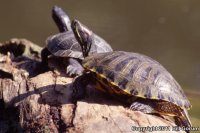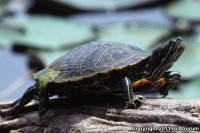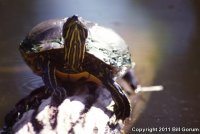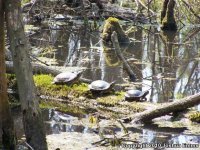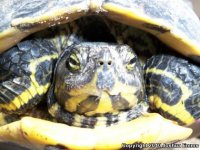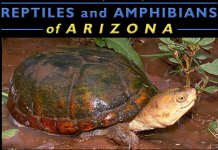| Range: |
 Red-eared Sliders are native to the Pecos River drainage, invasive in the rest of the state. Red-eared Sliders are the most widely introduced turtle in the world and is included among 100 of the World's Worst Invasive Alien Species. Yellow-bellied Sliders have a few sightings in the Rio Grande in the Albuquerque area and are not native. Please do not release pet turtles into the wild! Red-eared Sliders are native to the Pecos River drainage, invasive in the rest of the state. Red-eared Sliders are the most widely introduced turtle in the world and is included among 100 of the World's Worst Invasive Alien Species. Yellow-bellied Sliders have a few sightings in the Rio Grande in the Albuquerque area and are not native. Please do not release pet turtles into the wild! |
| Other Names: |
Slider, Red-ear, RES |
| Subspecies: |
Red-eared Slider Trachemys scripta elegans: broad reddish stripes behind eyes in most individuals, red occasionally replaced by yellow; vertical bands on carapace often indistinct.
Yellow-bellied Slider Trachemys scripta scripta: yellow blotches behind eyes; distinct vertical yellow bands on pleurals; round dusky smudges on undersides of marginals and front of plastron; vertical stripes on back of hindlimbs and narrow yellow stripes along front of forelimbs. |
| Description: |
A medium-sized (shell up to 355 mm or 14" in length) aquatic turtle with a low, mildly keeled shell. On young animals the top part of the shell (carapace) is often marked with yellow and green streaks. The carapace darkens with age and becomes uniformly black or dark brown on older adults. The head and limbs are dark olive-gray with numerous cream and yellow stripes. A dark horizontal bar runs through the middle of each eye. The bottom part of the shell (plastron) is marked with several large, dark blotches on a yellow background. The rear edge of the carapace is serrated. Females grow to a much larger size than males. |
| Similar Species: |
Big Bend Slider has a large black-bordered orange spot and a much smaller spot behind each eye. The similar looking Painted Turtle has an orange plastron. |
| Habitat: |
Generally an inhabitant of shallow, permanent water with abundant vegetation and a soft bed. Found in ponds, shallow coves within reservoirs, backwaters, and slow moving portions of rivers. |
| Behavior: |
Often seen basking in the sun on floating logs or on rocks that break the surface far from shore. Also floats in sun-warmed surface water and occasionally basks on the bank. Forages during the day and spends the night on the bottom of the pond or river. A wary turtle that is quick to dive under the water when it senses danger. |
| Hibernation: |
|
| Reproduction: |
Mates in spring. Females are capable of storing sperm to fertilize a second clutch of eggs. Clutches of up to 25 eggs each are buried in moist nests on the bank in spring and summer. Eggs hatch about 10 weeks after being laid. |
| Diet: |
This turtle is an omnivore that feeds on a variety of aquatic plants, crayfish, snails, insects, tadpoles, fish, and insects. Young tend to be more carnivorous than adults. |




